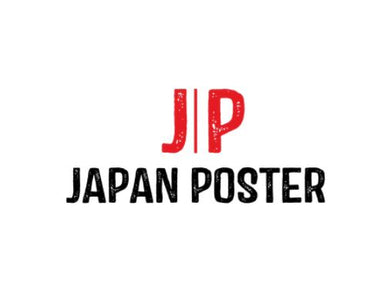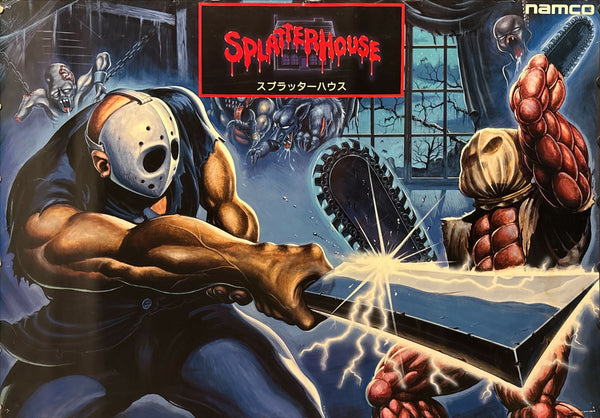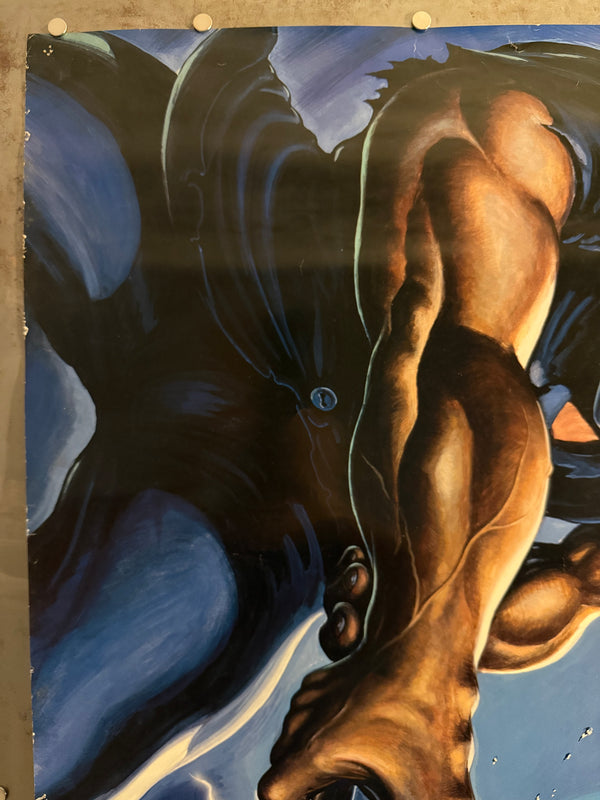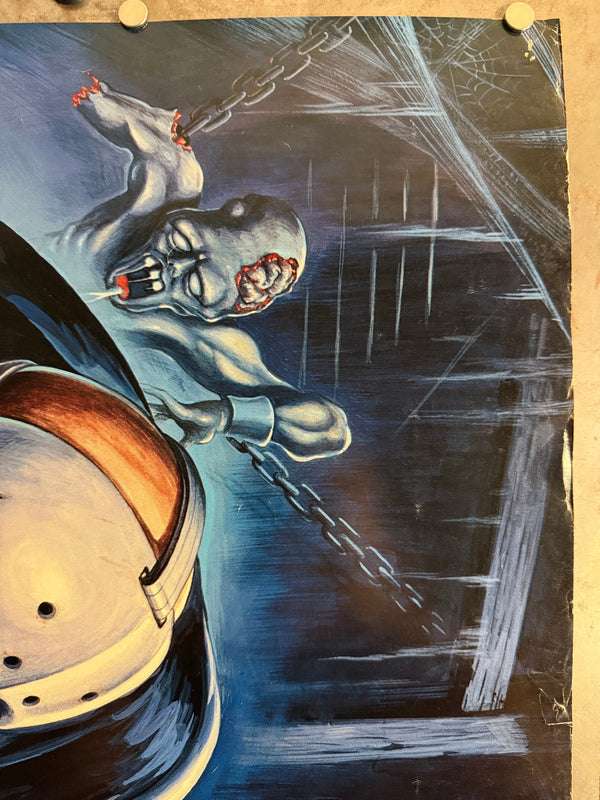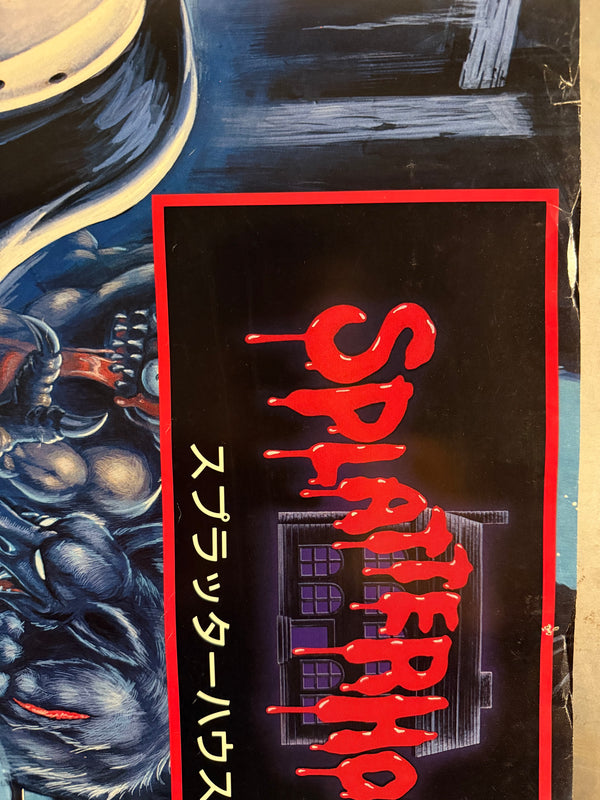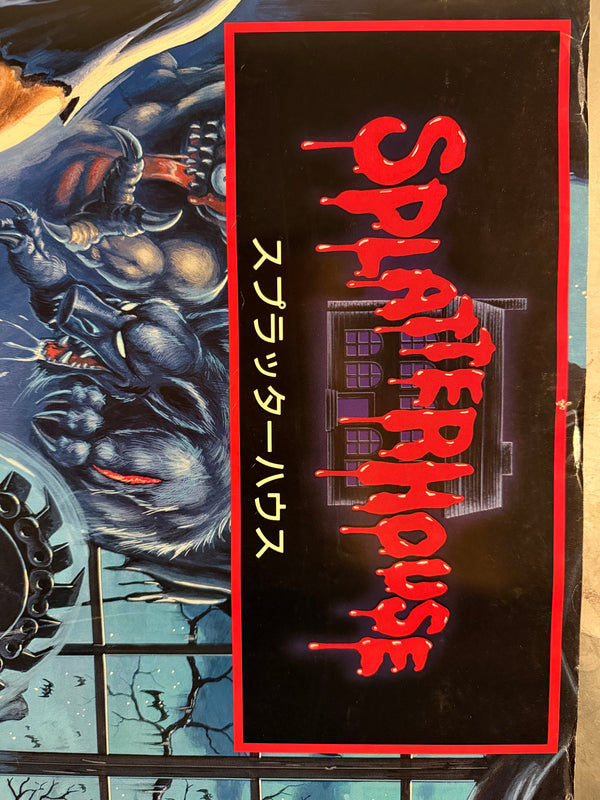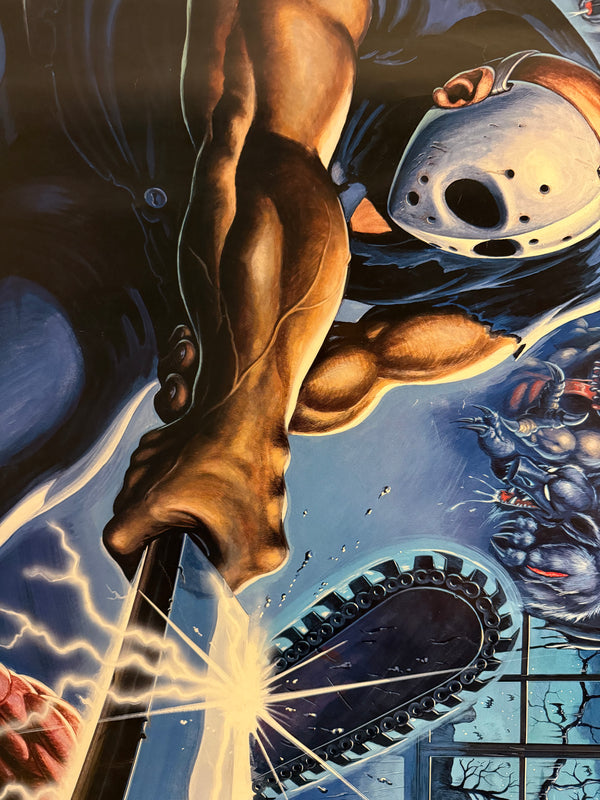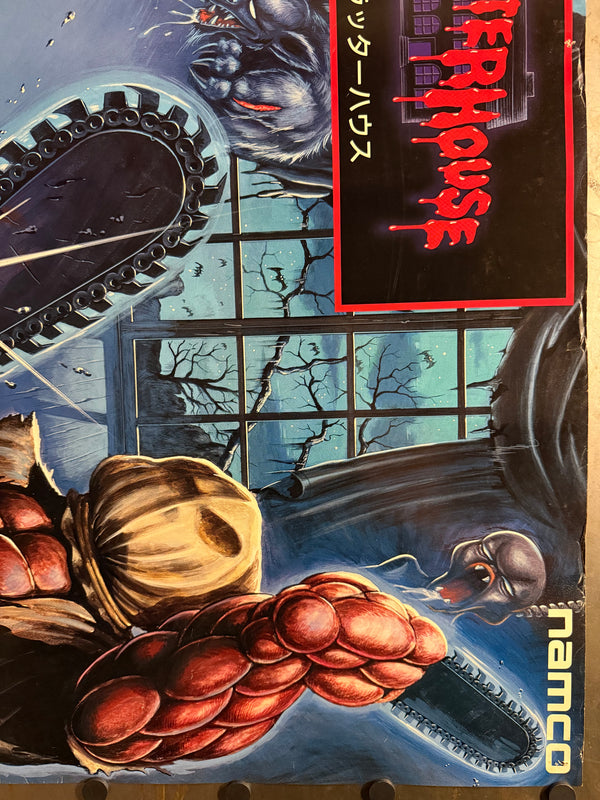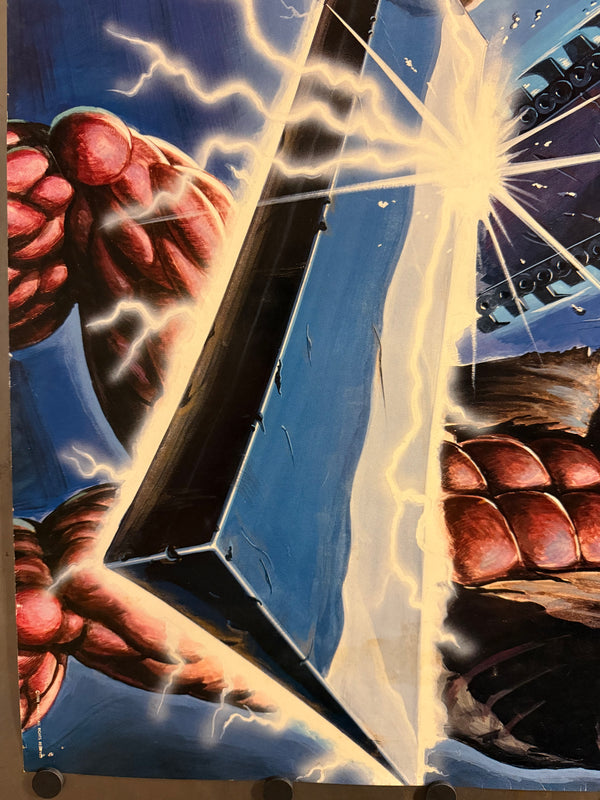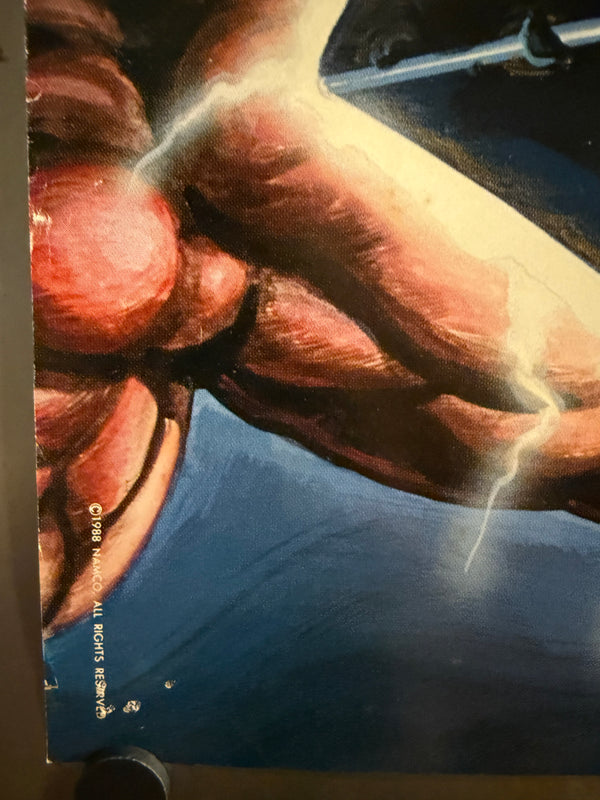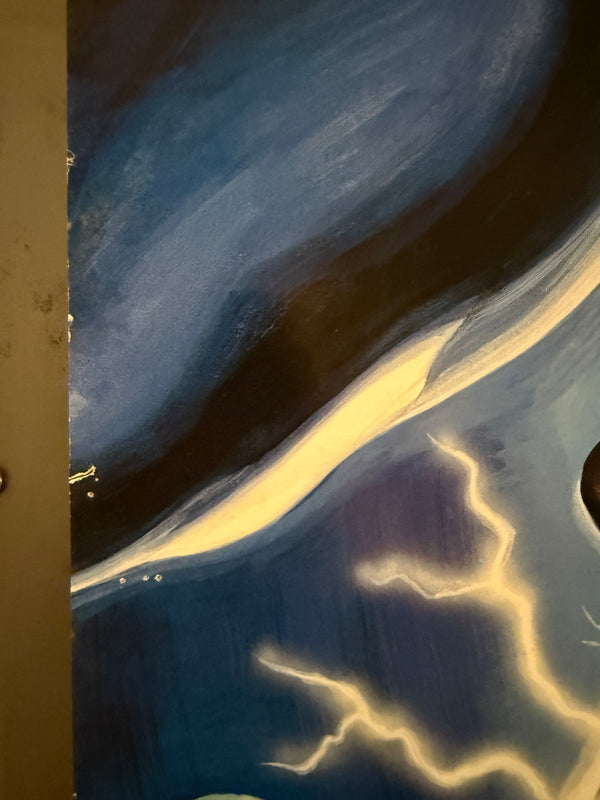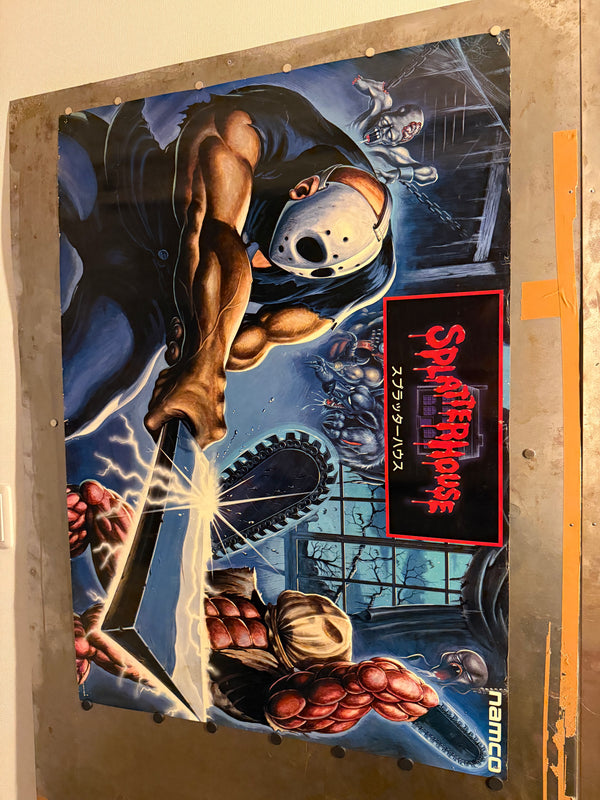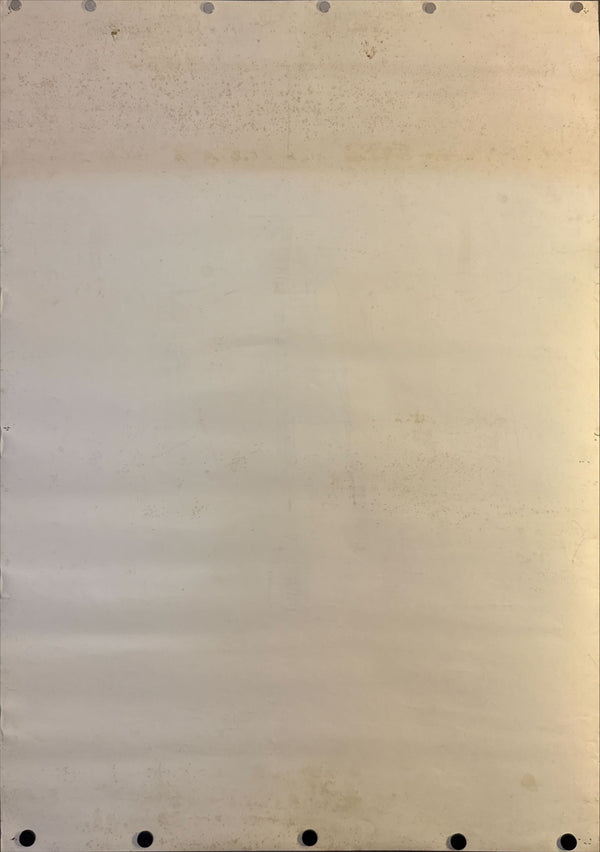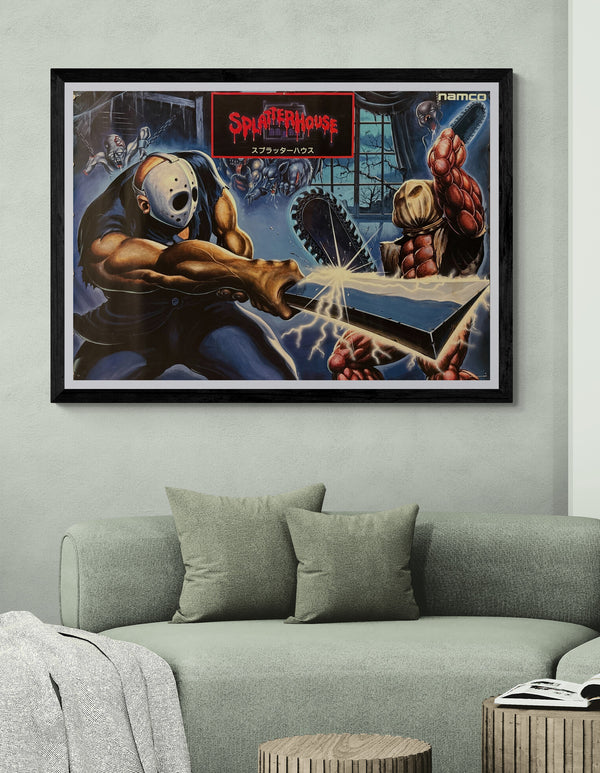
“SPLATTERHOUSE” (1988) – ORIGINAL JAPANESE B1 ARCADE POSTER – KEY VISUAL BY YUICHIRO KOMORIYA* | TITLE LOGO BY AKIRA USUKURA* Extremely Rare | Arcade Use | First Release | 72.8 × 103 cm (B1) AA24
“SPLATTERHOUSE” (1988) – ORIGINAL JAPANESE B1 ARCADE POSTER – KEY VISUAL BY YUICHIRO KOMORIYA* | TITLE LOGO BY AKIRA USUKURA*
Extremely Rare | Arcade Use | First Release | 72.8 × 103 cm (B1)
This is an original Japanese B1 poster printed by Namco for the 1988 arcade release of Splatterhouse (スプラッターハウス)—the cult, gore‑drenched side‑scrolling beat ’em up that charged into Japanese game centers at the height of the late‑’80s arcade boom. The game’s official staff list credits “Special Artist” Yuichiro Komoriya (小森谷勇一郎) and “Title Design” by Akira Usukura (うすくらあきら); this B1 uses the same key visual and drippy red logotype seen across first‑release promotion.
Printed for display inside game centers (ゲームセンター)—not for retail sale—this B1 matches the original arcade size (1030 × 728 mm) noted by Bandai Namco’s own “Namco Museum of Art” reprint program, which describes the design as the full‑size poster used in arcades. (This listing is for an original 1988 issue, not a modern reprint.)
Why this example is extraordinary (rarity & market)
Arcade advertising posters were produced for operators, not bookstores, and were almost always 店舗用/非売品 (store‑use / not for sale). Japanese dealers still classify them that way today. As a result—unlike film posters—they were posted hard and commonly discarded once campaigns ended; contemporary Q&A from arcade staff confirms store POP/posters were typically thrown out or cut up after use. Surviving originals are scarce, and early Namco horror titles are among the most pursued.
Poster design
A huge, diagonal composition explodes with motion: Rick Taylor—his face hidden behind the infamous hockey‑style Terror Mask—swings a blood‑spattered 2×4 as it clashes with a roaring blade, sparks bursting at the impact point. Around him, Komoriya’s painting crowds the frame with nightmare fauna: chained ghouls, a sinewy beast lunging from the right, and a chainsaw‑armed horror below a shattered window, bats wheeling in a storm‑blue sky. The title block carries Usukura’s iconic dripping logo “SPLATTERHOUSE,” set against the haunted house silhouette, with the vertical Japanese legend 「スプラッターハウス」 beside it; “namco” runs up the lower right border and ©1988 NAMCO microtext sits along the lower-left edge—all period‑correct details visible in our photos. (Key visual attribution per staff credits; “title design” credit per the game’s official rolls and databases.)
About the game (cultural significance)
Released to Japanese arcades in November 1988, Splatterhouse fused the then‑ascendant belt‑scrolling action game with imagery lifted from Western horror cinema and Lovecraft—rage‑cathartic brawling, gruesome bosses, and a mask that seemingly whispers back. Marketing leaned into the shock value so much that the later TurboGrafx‑16 port even carried a tongue‑in‑cheek “parental advisory”‑style disclaimer on the box. Its return in 2023 via Hamster’s Arcade Archives underlines its enduring cult status.
1988 in the arcades
Splatterhouse arrived amid a banner year that also gave arcades Sega’s Altered Beast and Capcom’s Ghouls ’n Ghosts—brawny, effects‑laden showcases for what cabinets could do before the 16‑bit console wave hit homes. Against that backdrop, Namco’s gore‑soaked haunted‑house brawler stood out as the genre’s pure horror entry.
Condition
Excellent. Displayed in 1988 with only minor signs of use: tiny pinholes at corners, a few light handling marks visible under raking light—see our many close‑ups. Colors are deep and unfaded; paper lies flat with crisp edges. A beautifully preserved survivor of arcade‑floor promotion.
It is over 37 years old!
It is not a reproduction or a reprint.
Certificate of Authenticity included.
Notes on authorship
The arcade staff credits list Yuichiro Komoriya as “Special Artist” and Akira Usukura for title design; Bandai Namco’s recent “Namco Museum of Art × TORCH TORCH” project describes the same Splatterhouse key visual as a painted original preserved in the archive, consistent with the brush‑rendered poster art seen here.
Size
B1 – 72.8 × 103 cm (28.7 × 40.6 in). Bandai Namco lists the historical arcade B1 at 1030 × 728 mm.
Provenance & use
Original Japanese arcade poster (store‑use, non‑retail) for Namco’s 1988 first release—designed to be pinned inside game centers and typically discarded after. Surviving originals in this condition are exceptionally rare.
* Artist/title‑logo attributions from the game’s official staff: “Special Artist: Y. Komoriya (小森谷勇一郎), Title Design: Mr. Usukura (うすくらあきら).”
A rare opportunity to acquire a genuine, arcade‑floor first‑release Namco horror showpiece—an original 1988 B1 that captures the moment when late‑’80s Japanese game centers embraced graphic, cinematic horror and never looked back.
